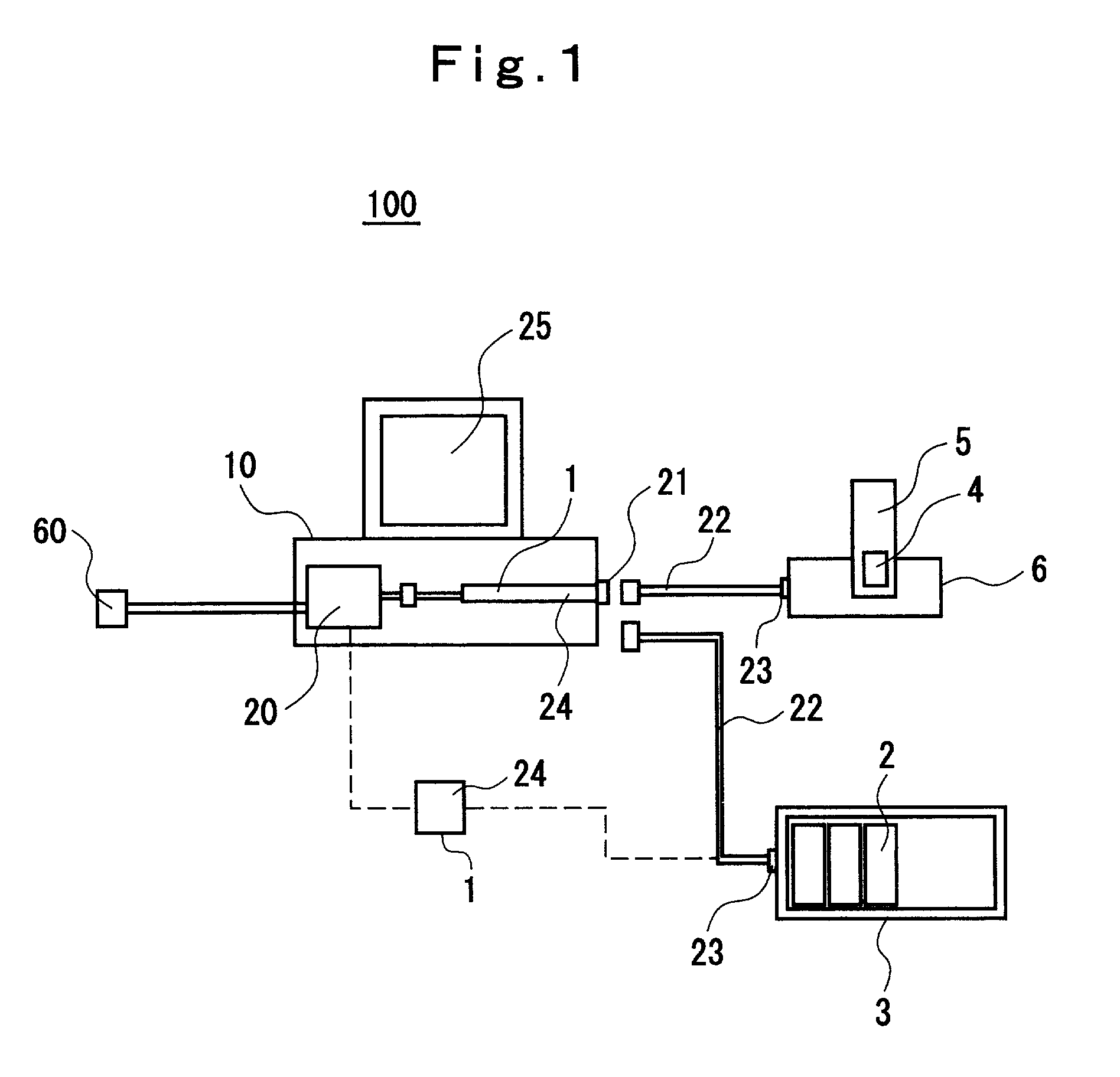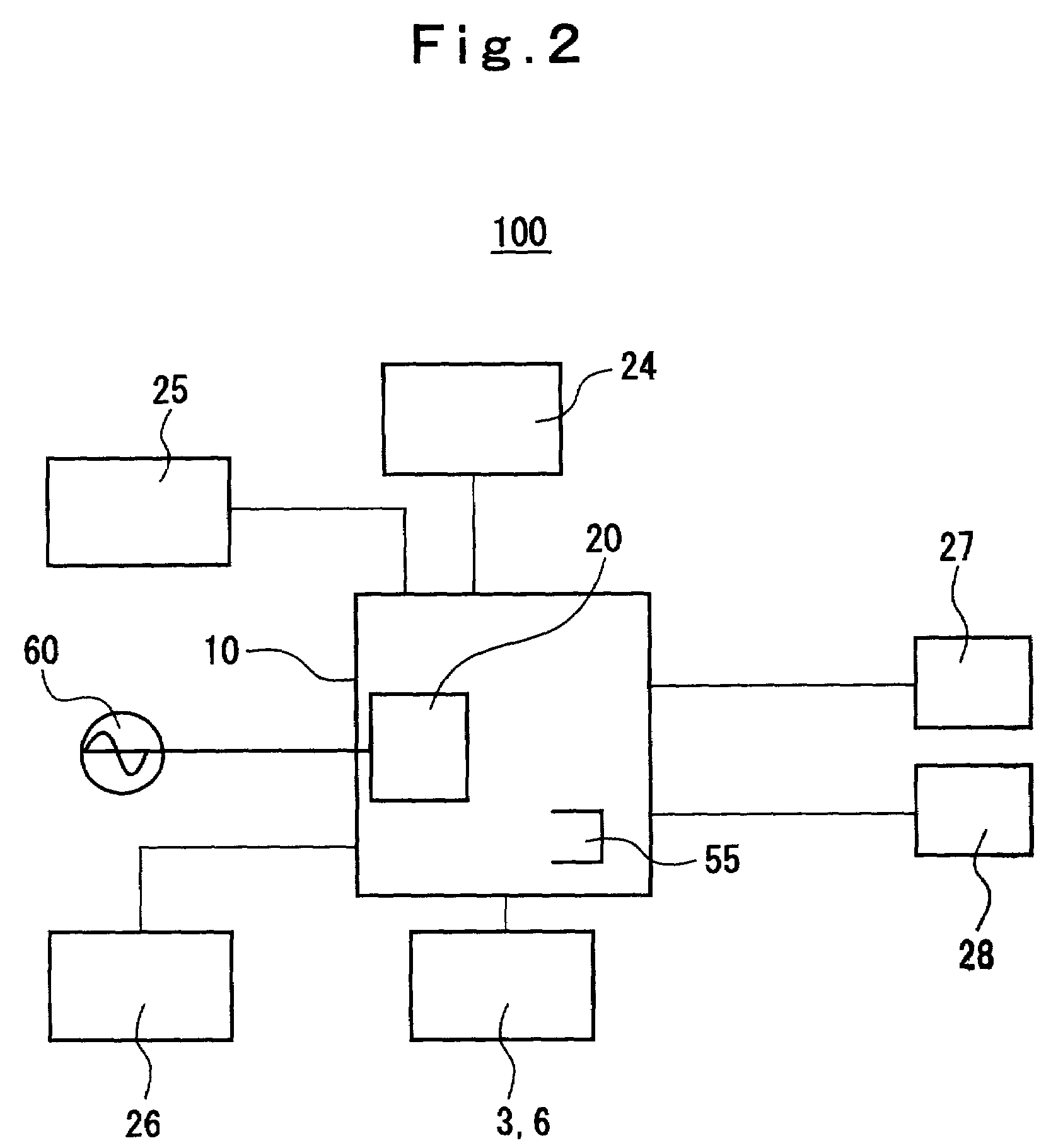Method and apparatus for charging a rechargeable battery
a rechargeable battery and charging method technology, applied in the direction of electric vehicles, electric generators, transportation and packaging, etc., can solve the problems of increasing cost, affecting the service life of batteries, etc., and achieve the effect of reducing the number of batteries and reducing the number of charges
- Summary
- Abstract
- Description
- Claims
- Application Information
AI Technical Summary
Benefits of technology
Problems solved by technology
Method used
Image
Examples
Embodiment Construction
[0070]Embodiments of a charging method and a charging apparatus according to the present invention are described in detail below, with references made to relevant accompanying drawings.
[0071]Specifically, FIG. 1 is a drawing illustrating the general configuration of an example of a charging apparatus according to the present invention, this drawing showing a charging apparatus 100 wherein the internal power supply circuit 20 of a computer apparatus (PC) 10 is used as the power supply of a charger 1 required for a charging operation on a secondary cell.
[0072]The PC in the present invention is desirably selected as a general-purpose PC, a dedicated game PC, or a TV PC having a TV with bi-directional communications capability.
[0073]This PC can be a desktop type PC, a laptop PC, and even a smaller portable or mobile PC.
[0074]Additionally, the charger 1 used in the present invention can be a charging processing operation program 24 itself, which is required for a charging operation on se...
PUM
 Login to View More
Login to View More Abstract
Description
Claims
Application Information
 Login to View More
Login to View More - R&D
- Intellectual Property
- Life Sciences
- Materials
- Tech Scout
- Unparalleled Data Quality
- Higher Quality Content
- 60% Fewer Hallucinations
Browse by: Latest US Patents, China's latest patents, Technical Efficacy Thesaurus, Application Domain, Technology Topic, Popular Technical Reports.
© 2025 PatSnap. All rights reserved.Legal|Privacy policy|Modern Slavery Act Transparency Statement|Sitemap|About US| Contact US: help@patsnap.com



